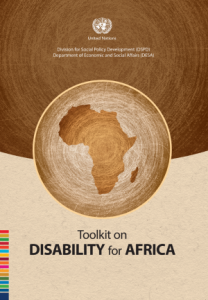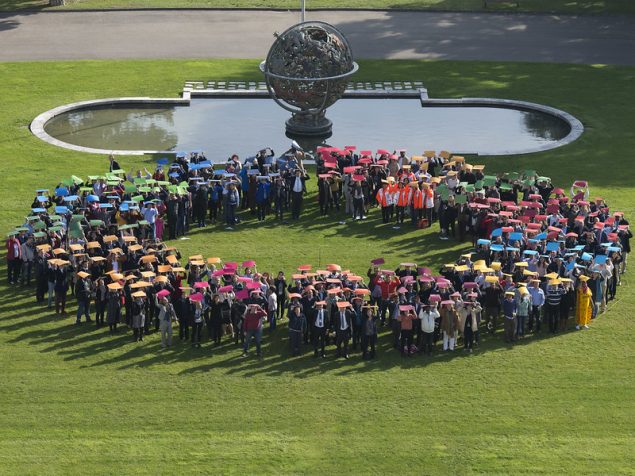Organized by the Secretariat for the Convention on the Rights of Persons with Disabilities (SCRPD) of the Division for Social Policy and Development (DSPD), Department of Economic and Social Affairs (UNDESA) in collaboration with The Zero Project at the 4th Zero Project Conference
26 February 2015, 14:00 -15:30, UN Headquarters Vienna, M building
Join the disability-inclusive disaster risk reduction network. Take the survey!
Introduction
The 4th Zero Project Conference will bring together over 500 decision-makers, opinion leaders and experts from the field of disability from more than 50 countries. Participants will highlight innovative policies and innovative practices concerning independent living and political participation and other priority issues in the field of disability, including disability-inclusive disaster risk reduction, resilience and reconstruction.
The Secretariat for the Convention on the Rights of Persons with Disabilities of the Division for Social Policy and Development/DESA will organize a consultation with the objective to contribute to the upcoming third World Conference on Disaster Reduction in Sendai, Japan (14-18 March 2015) through bringing together contributions of leading global experts in technology, disability and development to the on-going work for a disability-inclusive disaster risk reduction framework. Based on the first Hyogo Framework of Action (HFA), the international community is moving forward to adopt a post-2015 international framework on disaster risk reduction (HFA2) at the Third United Nations World Conference on Disaster Risk Reduction (3WCDRR) from 14 to 18 March 2015 in Sendai, Japan. This framework will guide and support global, regional, national and local efforts to build nations and communities that are resilient to disasters.
Background
During the past decade, the world has witnessed an increase in the number of major disasters, including the Haitian Earthquake in 2010, the Indian Ocean Earthquake and Tsunami in 2004, the Great East Japan Earthquake in 2011, and Hurricane Sandy in the United States in 2012. Based on the first Hyogo Framework of Action (HFA), the international community is moving forward to adopt a post-2015 international framework on disaster risk reduction (HFA2) at the Third United Nations World Conference on Disaster Risk Reduction (3WCDRR) from 14 to 18 March 2015 in Sendai, Japan. This framework will guide and support global, regional, national and local efforts to build nations and communities that are resilient to disasters for transitioning into reconstruction.
Persons with disabilities, globally, over 1 billion people or 15 % of the world’s population, face higher risks and are disproportionately affected by disasters and emergency situations. Available data indicates that the mortality rate of the disabled population is two to four times higher than that of the non-disabled population in such situations. The UN Convention on the Rights of Persons with Disabilities in Article 11 on “Situations of risk and humanitarian emergencies” in this regard calls for action to take all necessary measures for the protection and safety of persons with disabilities in situations of risk, including natural disasters.
Through the inclusion of persons with disabilities in disaster risk reduction efforts, it can save not only the lives of persons with disabilities, but also those of many others living in the same community. Available data indicates that persons with disabilities can be an important resource for disaster risk reduction, resilience and reconstruction. For example, during the Great Tohoku Earthquake and Tsunami in Japan in 2011, persons and children with disabilities who had been trained in disaster risk reduction programmes, including evacuation processes, have led the evacuation process and saved lives of other members of their community .
Consultation on disability-inclusive disaster risk reduction and technology
The 4th Zero Conference provides an excellent opportunity to contribute to the on-going work in DIDRR and technology, as it brings together academics, policy-makers, and practitioners worldwide, including globally renowned experts in the fields of disaster risk reduction and ICTs.
The consultation would highlight the potential of innovative and assistive emerging ICT technologies for persons with disabilities in disaster and emergency situations, such as early-warning systems, location and navigation applications, and emphasize the urgency in making such accessible technology in the context of DIDRR.
The consultation will contribute to the third World Conference on Disaster Risk Reduction and the future implementation of its outcome as well as to building new networks on DIDRR and technology for future implementation of both the HFA2 and a disability-inclusive post-2015 development agenda.
Guiding questions for presenters
- What is required at the policy/programme/project levels to include disability and persons with disabilities in all stages of adoption/use and training for use of technologies for disaster prevention, preparedness and response?
- How can partnerships and networking enhance and support DIDRR and disability-inclusive development, in particular with the community of experts in DRR technologies? What is the role of DPOs/expert communities/private sector/private foundations/academic communities?
- In order to put disability-inclusive disaster reduction policies, programmes and guidelines into practice:
- What are existing technologies in use for disaster reduction;
- Which technologies should be available and adopted;
- Which new technologies should be considered for DIDRR, what are the timeline, cost-effectiveness and practical implications for existing DRR and (4) what could technology experts do to advance DIDRR?
- How can the disability community work to implement the post-2015 framework for disaster risk reduction (HFA2) together with experts in DIDRR technology?
- How can we collect, measure, monitor and evaluate disability inclusiveness of the implementation of the post-2015 framework for DRR (HFA2) and how can technology advance such monitoring and evaluation?
Programme
Opening
Welcome and opening remarks: Daniela Bas (Director, DSPD/UNDESA)
Welcome remarks: Michael Fembek (Essl Foundation/ Head Zero Project)
Presenters:
Introduction: Akiko Ito (SCRPD/DSPD/UNDESA): Overview of the progress in disability inclusive disaster risk reduction toward a post 2015 development agenda: Hyogo Framework for Action 2(HFA2)/the third World Conference on Disaster Risk Reduction.
Keynote presentation: Dr. Hiroshi Kawamura: Disability Caucus-HFA2 Focal Point, Consultant on DiDRR/United Nations
List of presenters:
- Ms. Mechthilde Fuhrer, Deputy to the Executive Secretary, EUR-OPA Major Hazards Agreement
- Dr. Alex Robinson – Country Director Indonesia Arbeiter-Samariter-Bund (ASB), Inclusive-DRR Adviser, Disability-inclusive DRR Network (DiDRRN) partner
- Aqeel Quershi, Vice-President, Global Alliance on Accessible Technologies and Environments (GAATES)
- Natalia Llieva, Executive Assistant to Secretary General, Asia Pacific Broadcasting Union
- Benjamin Dard, Christoffel-Blindenmission (CBM)
Rapporteurs:
- Betty DION, Past- President GAATES
- Dr. Hiroshi Kawamura: Disability Caucus-HFA2 Focal Point, Consultant on DiDRR/United Nations
Interactive discussion
Summary and closing




